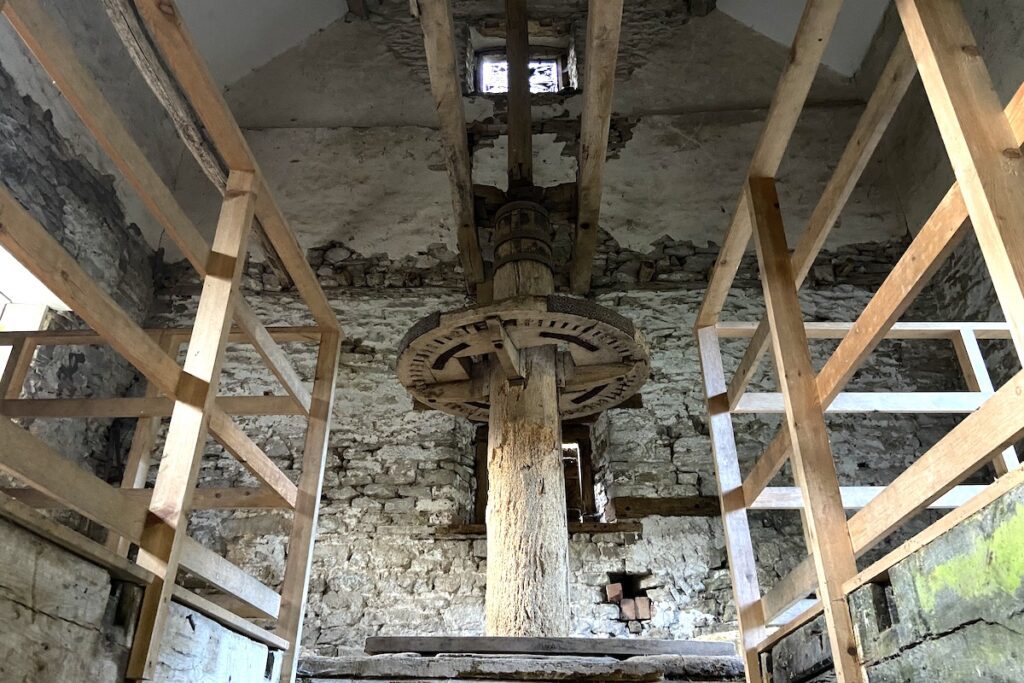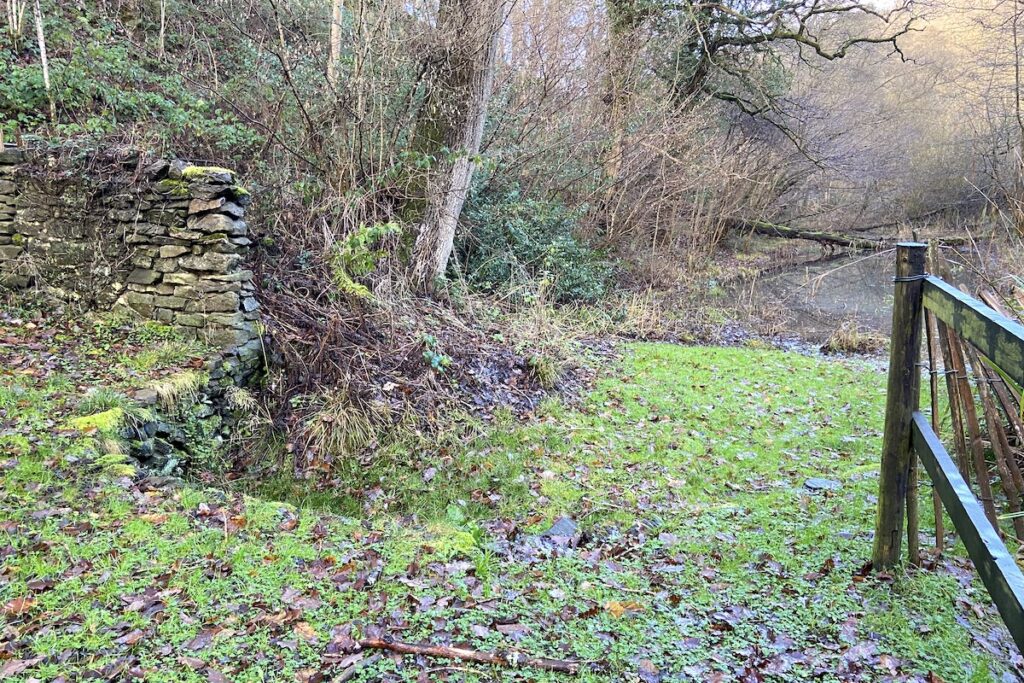Knowles Mill
Knowles Mill is a water mill that was used to grind corn in the Wyre Forest. It once diverted water from the Dowles Brook to power an iron overshot waterwheel. The mill is now a delightful attraction for walkers and cyclists exploring the peaceful surroundings.

Key info
| Location | Dowles Brook, Bewdley, DY12 2LX |
| County | Worcestershire |
| Completed | c. 1757 |
| Maintained by | National Trust |
| Heritage category | Listed Building Grade II |
Visiting guide
Check opening hours
Free entry
Free car park
What can I expect when visiting Knowles Mill?
Head over the bridge crossing the Dowles Brook and enter the mill.

You will see the pit wheel with the great spur wheel above. The pit wheel was powered directly by the waterwheel outback, and this powered the great spur wheel, which turned each pair of millstones.

Above the great spur wheel is the crown wheel, which powered the drive to the meal dresser and the sack hoist on top.

Notice the workbench with historical tools.

There is also an original fireplace.

Head out of the mill and walk around it to the second floor.

You will walk past the leat before heading into the mill again.

Here you will find notice boards with more information about the mill and local industries. You can also view the millstones.

Head around the back of the mill past the cottage for a view of the headrace, waterwheel remains and the tailrace at the bottom of the wheel pit.

As you head back to the front door of the mill, notice the two openings in the wall. Depressions in their wooden sills suggest that a belt, chain or rope drive passed through these openings from a pulley on the spindle, which drove the millstones; however, there is nothing outside to indicate what stood there.

How long does it take to see Knowles Mill?
It will take you around 10 minutes to see Knowles Mill. It may be worth extending your visit by walking the Dowles Brook Circular Walk, of which the mill is one of the main attractions.
Is Knowles Mill suitable for a picnic?
The Wyre Forest is a picturesque location with ample spots for a picnic.
How do I get to Knowles Mill?
The mill is located next to the Dowles Brook in the Wyre Forest, there is no public transport nearby. It does have a dirt road leading to its bridge from Dry Mill Lane; however, it’s not clear if this road is for residents only.
On that note, it would be best to park up in the Dry Mill Lane car park and for the lane round to the mill. It’s about a ten-minute walk.
History of Knowles Mill
1722 – Daniel Crunn started letting the two Town Mills downstream; however, he took the copyhold of a cottage next to the site of Knowles Mill. Copyhold is a type of property tenure, according to the custom of the manor.
1735 – When Daniel died, both mills and the cottage passed to his son William.
1748 – William gave up the lease of the Town Mills and the cottage.
1757 – The first reference to a mill on this site is advertised for sale in Berrow’s Worcester Journal as a ‘New erected messuage, with water corn mills and out-buildings hereto adjoining’.
1772 – The copyhold was bought by William Herbert, followed by William Nichoils, described as “a miller of Dowles”
1775 – The mill, cottage and five acres of land “well planted with fruit trees” was advertised again for sale in Berrow’s Worcester Journal. Arthur Nott Brasier then became the next miller.
1803 – James Knowles became the copyholder. He had also had milling interests at Titton Mill near Stourport-on-Severn and later at Cooper’s Mill, which is a short distance upstream.
1821 – Thomas Knowles took on the mill.
1867 – Richard Knowles took on the mill, who was described as a farmer and miller. During Richard’s occupancy, the property was sold first to Henry Rowe and then to Richard Pease of Darlington.
1880s – William Smith becomes the last miller. He lived at nearby Lodge Hill Farm while his son, Edward, lived in the mill cottage. By this time, most of the milling trade had gone to the steam-powered mills in towns and cities.
1891 – Milling ceases after a severe winter. The mill probably became a source of firewood, losing the boarding from the hurst and the first floor.
1938 – The mill and cottage were eventually acquired by the Cadbury family who donated them to the National Trust.
1971 – Essential structural repairs are carried out [1].
1986 – The mill is first designated as a listed structure [2].
2010 – Funding from the ‘Grow with Wyre’ project and the National Trust resulted in further structural repairs and stabilisation of the machinery.
2013 – Partial reboarding of the first floor greatly improves the display space [1].
Architecture
The mill is constructed from random sandstone rubble with brick dressings and a tile roof. The east gable has two storeys with a stable door on the ground and a loft on the first floor [2].
Sources
- Knowles Mill Information Boards.
- Historic England (2020) Knowles Mill. Available at: https://historicengland.org.uk/listing/the-list/list-entry/1166692 (Accessed: 17 Mar 2022).

 Warwick Castle Mill & Engine House
Warwick Castle Mill & Engine House